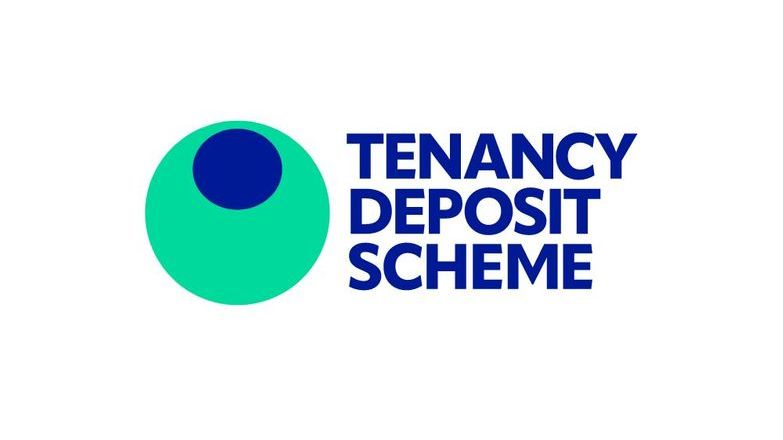
Common end-of-tenancy issues
Understanding the typical issues that lead to deposit disputes is the first step to preventing them. Tenancy Deposit Scheme (TDS) data over the years shows a clear pattern:
Cleaning
A major cause of deposit disputes is insufficient cleaning. At the end of a tenancy, differences in cleanliness standards often spark disagreements. Tenants may think a quick wipe down is enough, while landlords expect a professional-level clean.
TDS Tip: Provide tenants with a move-out cleaning checklist well in advance. Outline that the property should be returned as clean as at check-in (allowing for fair wear and tear).
Damage to fixtures and fittings
Historically, the second most common dispute cause has been damage beyond fair wear and tear. This can range from broken furniture or appliances to large stains on carpets.
TDS Tip: Start with a detailed check-in inventory that documents the property’s condition at move-in (with photos). At check-out, do a thorough inspection against that inventory. Gather evidence of any damage that is found. Also, differentiate wear and tear vs. damage; scuffs on paint or lightly worn carpet might be normal depreciation in a year-long tenancy, whereas a smashed window or a deep burn mark is damage. Being fair and only claiming for true damage will show tenants and any adjudicator that the agent is reasonable, reducing the chance of a lengthy dispute.
Redecoration and alterations
Issues like unauthorised repainting, lots of nail holes in walls, or stickers and Blu-Tack marks are common. Landlords expect the decor back as it was given, barring minor wear and tear. If tenants have repainted rooms without permission or left walls full of holes, a dispute can arise.
TDS Tip: Make sure the tenancy agreement is clear on what modifications (if any) are allowed. Remind tenants before move-out that any changes should be put right, e.g. walls repainted to the original colour or holes filled, or they may incur a deduction.
Rent arrears and late move-outs
Summer turnover can be so busy that a tenant occasionally overstays the tenancy or leaves owing some rent or bills. A tenant who hasn’t fully moved out on the agreed date can disrupt cleaning schedules or new move-ins, potentially causing costs to the landlord.
TDS Tip: Communicate clearly about move-out dates and times. In the final month, double-check that tenants understand when they must vacate and hand back keys. If someone is struggling to move out on time, try to find out early and work on a solution, even a few extra hours coordinated properly. For outstanding rent or utility bills, ensure there is an updated rent account statement and keep copies of any bills. These can justify deductions from the deposit for arrears.
Gardening and outdoor maintenance
In summer, a garden can quickly become overgrown. Many tenancy agreements place basic garden upkeep on the tenant. Failure to do so can lead to end-of-tenancy costs for pruning jungles of weeds or lawn restoration, which sometimes end up in dispute.
TDS Tip: Remind tenants of their gardening responsibilities as summer approaches. A quick email a month before check-out, like, “Please ensure lawns are mowed and flowerbeds weeded before you leave,” can prompt action. During check-out, document the state of the garden just like the interior. If a dispute arises, photos of a knee-high grass jungle compared to the neat lawn at move-in will support a claim for gardening costs. Clear communication and documentation are an agent’s best allies. Many tenants say they weren’t fully aware of the standard or obligations expected. So, educating them early and providing written guidelines can greatly improve the chances of a trouble-free check-out.
Best practices for efficient summer check-outs
When faced with dozens (or hundreds) of tenancies ending in a short span, having a systematic approach is critical. Here are the best practices from TDS to ensure compliant and efficient deposit returns:
1. Start early
Preparation is key in the weeks leading up to peak turnover. Begin by scheduling all known check-out appointments well in advance, get them in the calendar and allocate sufficient time for each inspection. If possible, perform pre-checkout inspections or send a reminder to tenants 2-4 weeks before move-out, highlighting what will be covered by the inspection. Early warnings give tenants a chance to fix issues, potentially heading off disputes.
2. Conduct thorough check-out inspections
On check-out day, approach each inspection methodically. Use the original inventory and check-in report as a checklist; this document is the benchmark for the property’s condition. Go through each room and item noted on the inventory, and document the check-out condition: take clear, date-stamped photos of any issues (unclean areas, damage, missing items). It’s often wise to have the tenant present during the check-out inspection. That way, the agent can point out any problems in real time and discuss them. If the tenant agrees that something needs cleaning or repair, note that. Their presence can also ensure transparency – they see what the agent sees. If they aren’t present, no problem, but be extra diligent in recording evidence. TDS adjudicators rely on evidence, so a good check-out report and photos will strongly support any legitimate deductions.
3. Be fair and clear on deposit deductions
After the inspection, decide what (if any) deposit deductions are justified. When proposing deductions, be fair and realistic in the amounts. TDS data indicates that in England and Wales, the most frequent outcome of disputes is a split of the deposit between landlord and tenant, meaning adjudicators often find neither party 100% right. This usually happens when a landlord overestimates costs or a tenant disputes minor issues. To avoid this, only claim what can be evidenced and justified. For example, if cleaning is needed, get a quote or invoice for the cleaning cost. It’s good practice to communicate proposed deductions to the tenant in writing, with a clear breakdown, e.g. “£150 for professional cleaning of kitchen and carpets (see photos), £80 to repair broken bookshelf.” By being transparent and proportional, the agent not only fulfils their legal duty, but also increases the likelihood that the tenant will agree, avoiding a dispute altogether.
4. Communicate proactively and offer guidance
Summer turnover is busy for tenants too; many are juggling moves, end-of-tenancy cleaning, and new jobs or courses. Keep communication open. Tenants expect deposits to be returned promptly and fairly, so it’s crucial to inform them of any issues or delays as soon as possible. If issues are found at check-out, let the tenant know the same day if possible. For instance, send an email: “Today at check-out, we noted a broken chair and some missing kitchen items. We’ll obtain costs and inform you of proposed deductions within X days.” This heads-up manages expectations.
5. Ensure timely and compliant deposit returns
One of the worst mistakes during a busy turnover season is to delay the deposit return process. Not only does this frustrate tenants (who often are counting on that money for their next deposit), but it can also put the agent in breach of rules. By law, once landlord and tenant agree on any deposit deductions, the agreed portion should be returned within 10 days. Even if still negotiating, acting promptly is key.
TDS Tip: Aim to have deposit matters wrapped up within a short, standard timeframe – for example, strive to propose any deductions within 2-3 days of check-out.
Bonus tip: Use smart tools to reduce admin and disputes. Peak turnover periods are a great time to lean on tech solutions. TDS partner Inventory Hive supports fast, professional digital inventories with photo capture and tenant sign-off. Proudly backed by TDS, Klerky connects agents with qualified, insured inventory clerks free of charge, and handles booking, messaging, invoicing, and report delivery all in one platform. For deposit registration, TDS API automates compliance steps, saving time and avoiding manual errors. And our partner The Depositary streamlines end-of-tenancy workflows like tenant communication, deduction proposals, and deposit returns, all fully integrated with TDS. Less admin, fewer errors, and more peace of mind.
Finish the summer on a high note
Now is the perfect time to join or switch to TDS. We offer both free Custodial and Insured deposit protection options, with an award-winning support team and resources tailored for letting agents. Protecting deposits and resolving disputes is what we do best, so agents can focus on what they do best - managing properties and clients.
TDS: Easy tenancy deposit protection
Tenancy Deposit Scheme (TDS) is the only not-for-profit, Government-approved tenancy deposit protection scheme offering both FREE Custodial tenancy deposit protection and Insured tenancy deposit protection.





